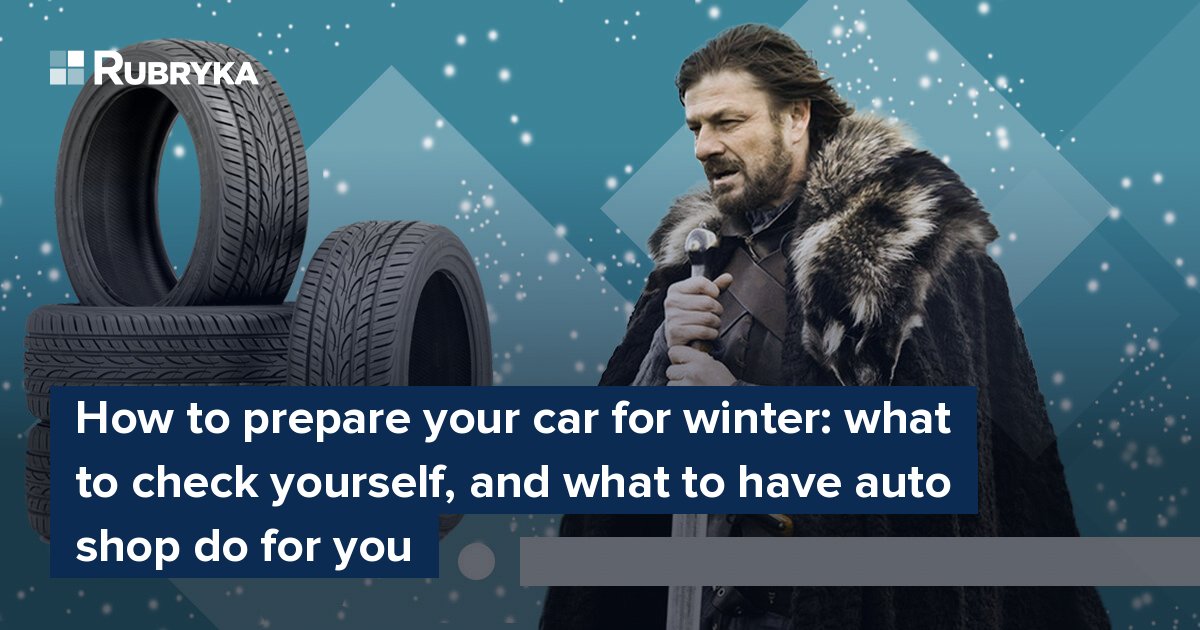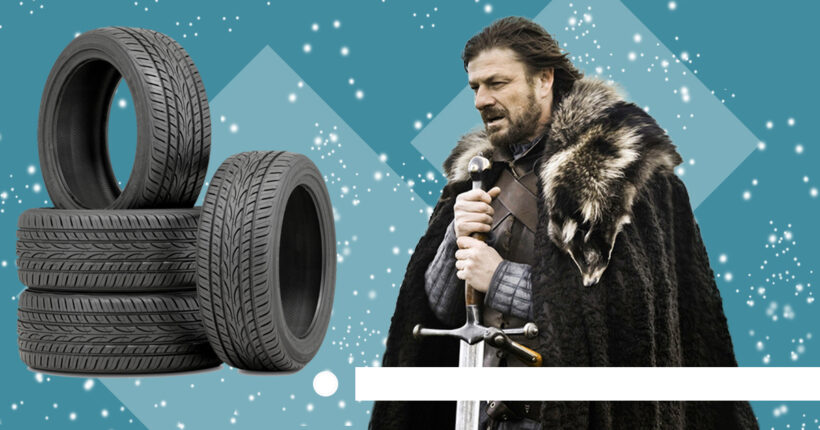
What is the problem?
The number of cars has increased significantly in Kyiv, as in all central and western regions of Ukraine. This means that Ukrainians are returning to their native city, have bought new cars, or have evacuated from the southern and eastern areas, where hostilities are currently ongoing. In any case, this means that very soon, we will have heavy traffic on the roads (which is already significantly worse every autumn) and crazy lines at repair shops to change tires.
Read on how to avoid inconveniences related to the change of season, how to protect yourself, and what motorists should pay attention to.
What is the solution?
Tires, tires, tires
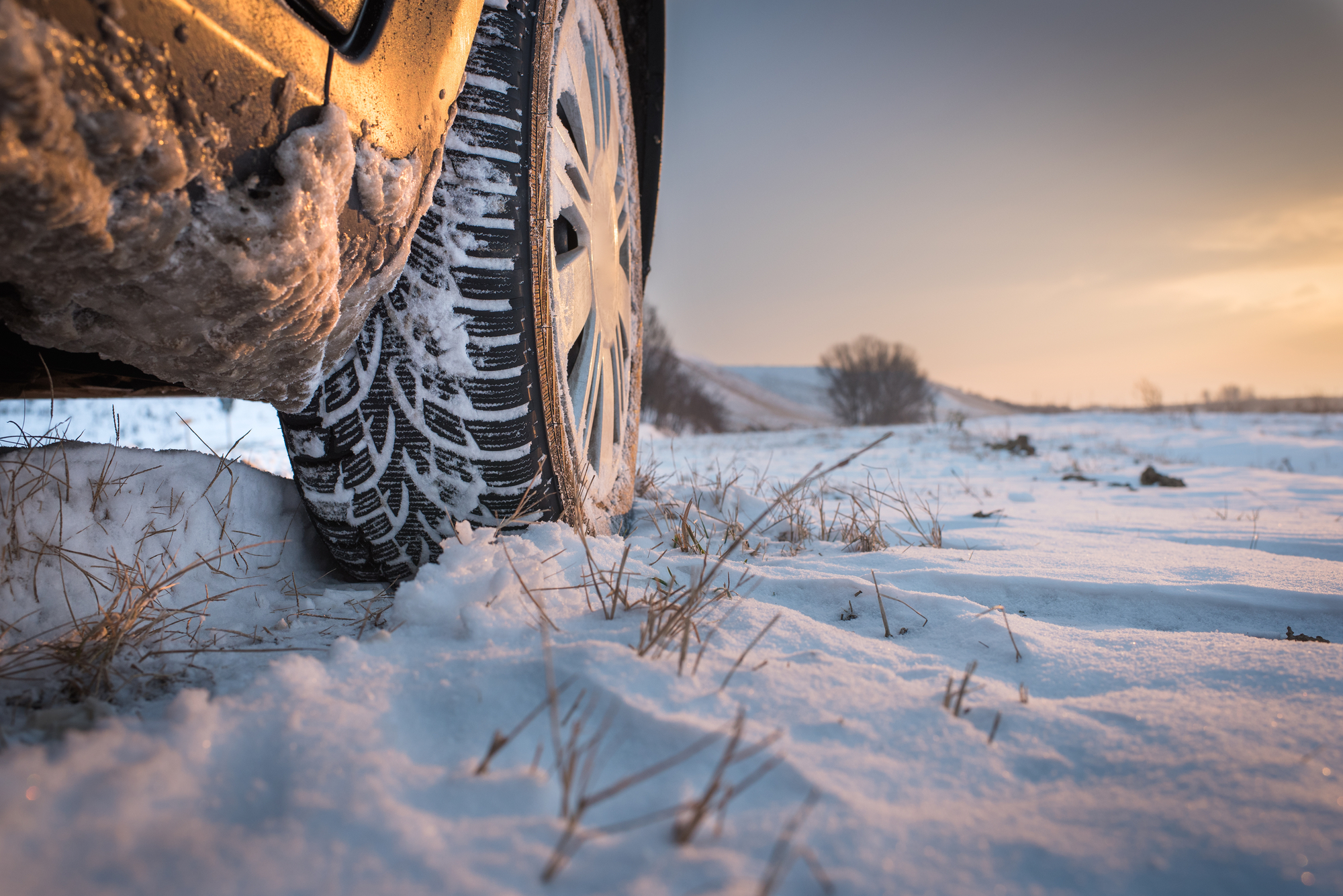
When to change tires? Ukraine's legislation has no mandatory date for changing tires, but there are fines for driving a car in a faulty condition, including for out-of-season tires. So the driver must determine when it is necessary to change the tire. Do this when the air temperature does not exceed +5…+7 degrees for several days.
Important:
- If you replace the tires too soon, the grip of winter tires on the asphalt will deteriorate since the rubber will be too soft.
- It is necessary to change tires on all four wheels simultaneously and not "re-shoe" the leading ones and leave the others for later. Driving on different tires causes dissonance in driving and can cause a serious accident.
At the auto repair shop, remember to:
- Check the tire pressure. If it is lower than recommended for the brand of your car, the tire protector may be closed. This reduces the level of its grip on the road and increases the risk of skidding. Car manufacturers always specify the pressure that must be maintained in the tires. You can see the tire pressure chart on the center pillar of the body / the inside of the fuel tank hatch/end of the front open door / the body above the wheel (found in commercial vehicles) / the vehicle manual.
- Balance the wheels. It is necessary.
If you have a sufficient budget, here is a convenient life hack: you will significantly save your time at the workshop if you have an additional set of wheels, immediately "dressed" in winter rubber.
What can you do on your own?
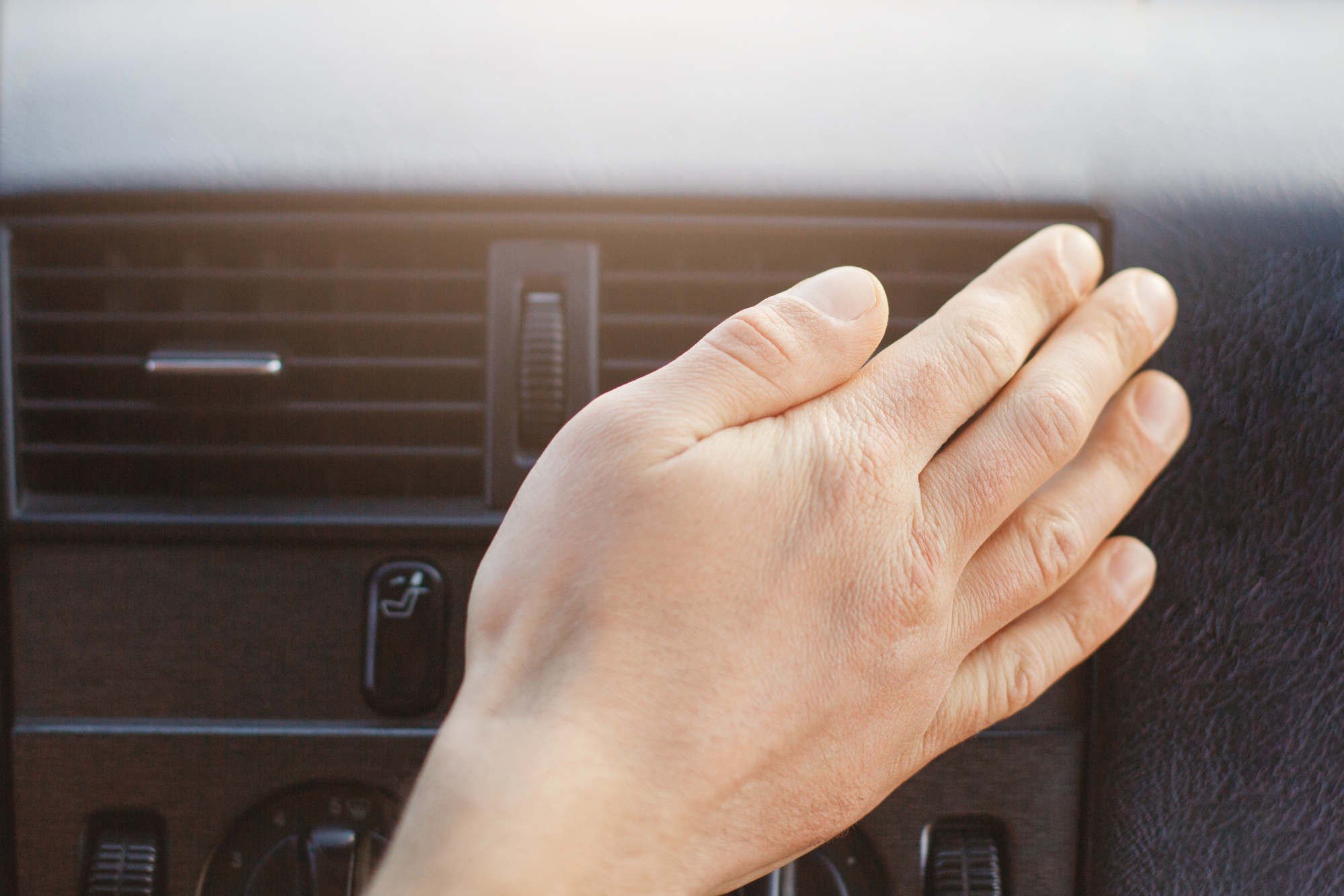
- Remove the dipstick and check the level and quality of the lubricant. It should not be too dense. The primary purpose of the lubricant is to lubricate engine parts and prevent their excessive friction and breakage. When temperatures are low, the oil thickens, and the engine overheats. Look in the car manual, which type of lubricant and with which viscosity index should be used in the winter period. And in general, it should be changed once a year or after every 10–15 thousand km of mileage.
- Check the level of antifreeze. This liquid protects the engine not only from freezing. In the hot season, it prevents overheating, and with it, the engine resists corrosion more easily. It is essential to maintain an equal ratio of antifreeze and water. If there is too much water, the mixture will freeze at low temperatures.
- Make sure the heater is working. It will be an unpleasant surprise if it breaks in the winter, so check whether it is working correctly now.
- Check the wiper blades and washer. Brushes for cleaning glass are rubber; therefore, over time, they crack, wear out, and do their job poorly. Thus, preparing a car for winter always includes, among other things, assessing the condition of the windshield wipers. In general, it is recommended to change the brushes every year. Do not forget to remove snow from and under the brushes before you go on the road. Otherwise, you can damage the wipers' mechanism when activated. Replace the windshield washer with a winter one.
- Replace textile mats with more practical rubber mats. They are easy to wash, easy to remove, and do not absorb moisture or other substances. Remember: special fasteners are installed on the driver's and front passenger's seats for mats in all cars. Ensure the floor mats are locked in place, as your safety depends on this: an unsecured floor mat can come off the pedal and cause an accident.
How to check the battery's health and whether it is necessary to buy a new one?
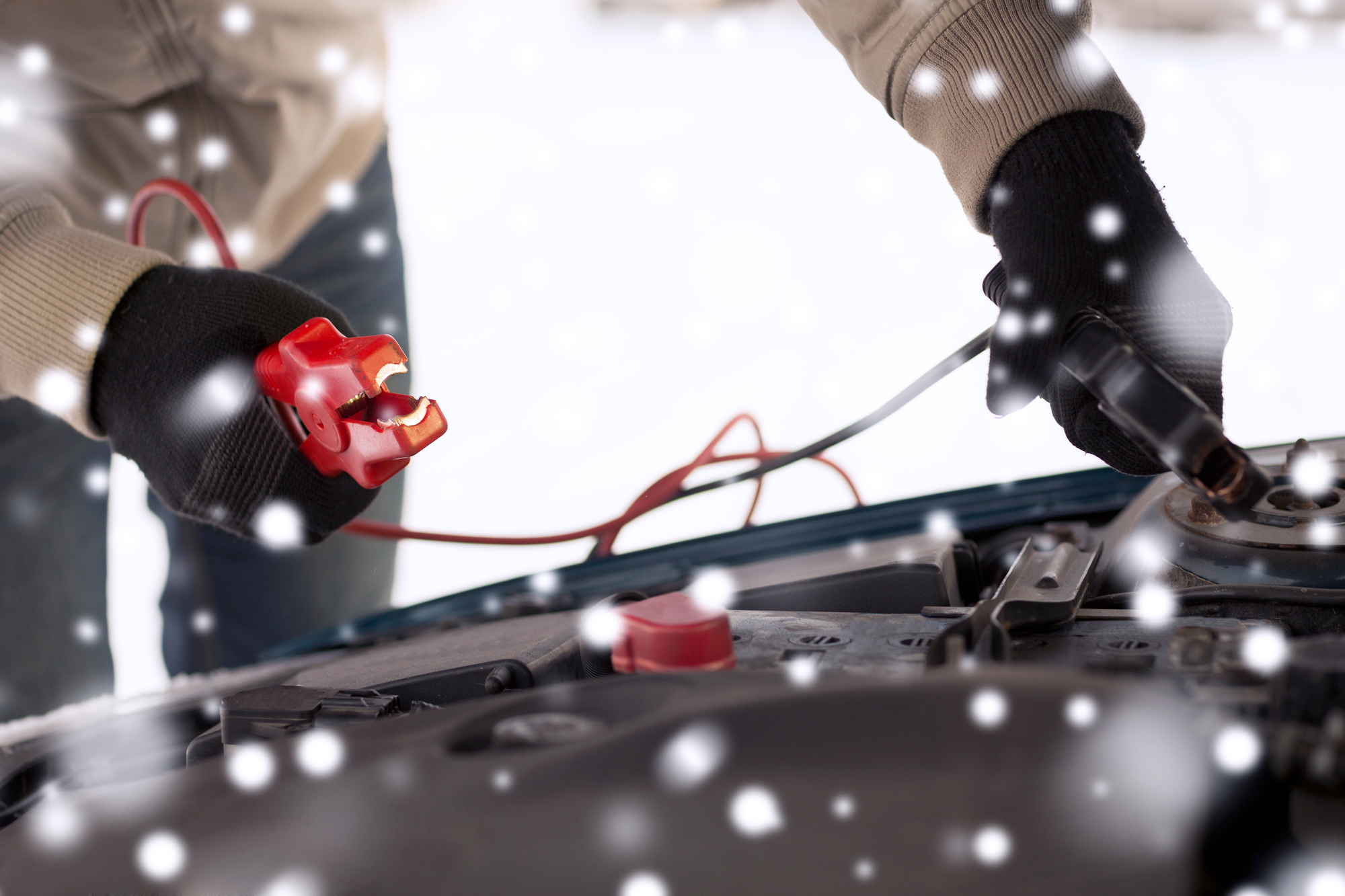
In severe frost, there is a risk that the battery will discharge, and you will not be able to start the car.
- If the battery is serviced, check the fluid level by unscrewing the battery cover. If the electrolyte is insufficient, add distilled water to the proper level.
- Inspect the terminals and wires. If there is corrosion (white plaque), remove it with a toothbrush and a mixture of salt and baking soda.
- If the car's battery is more than five years old, it is better to replace it with a new one.
Just in case: buy wires with clips at the ends ("crocodile"), which will help start the car in the cold from the donor car if the battery is entirely out of charge. If you find yourself in a situation where no "donor" is around, try to call a taxi driver, having previously warned him that you need to "light up." To avoid such a situation, before turning off the engine entirely in freezing weather, put the car on the handbrake, neutral gear, and "gas" several times. This will charge the battery a bit.
What should be additionally checked at the repair shop?
Branch pipes and belts. They should be checked every 50,000 km during vehicle maintenance. However, before the cold season, it also does not hurt to check the condition of these parts. When the temperature drops, the connections weaken even more. If somewhere something is not tightened correctly, this part may fail in the cold.
All-wheel drive operation. All-wheel drive is usually not used in the summer, even when driving off-road. But in winter, it can come in handy if you go on frozen or snow-covered roads. The method of turning on the system depends on the make of the car, but it is necessary to check the serviceability of the all-wheel drive in advance.
What to buy?
Necessary items for winter (and not only)
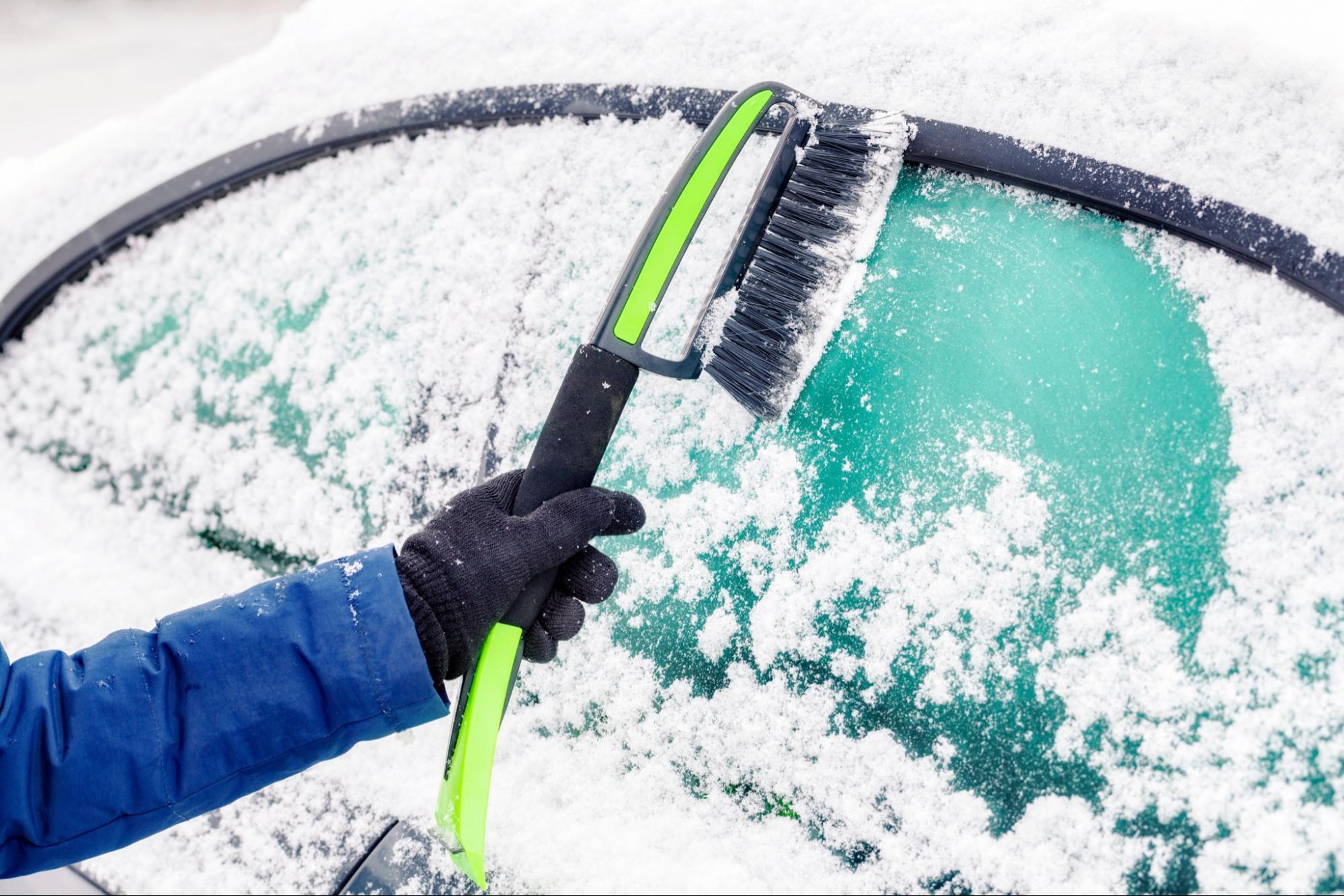
In the cold season, especially when the temperature hovers around zero, rainwater turns into ice as soon as it hits the surface. It is dangerous not only because of the ice but also because the car is frozen. Scraping off the icy layer from the glass, and even in the cold in the rain, with whatever happened to be at hand (often a plastic card) is surprisingly unpleasant. The same applies to cleaning the car from snow. So:
- Stock up on a special car brush. Order online or buy at any gas station. Please pay attention to a scraper on the brush: most likely, you will need it. Keep the brush in the car interior. Deluxe version: purchase a shovel in case of heavy snowfall.
- Put a pair of warm gloves and rubber gloves in the car. You will thank yourself for this during the thundersnow. Rubber gloves will be needed if you have to change the wheel yourself.
- Buy a product that helps to defrost the door lock. But don't keep it in your car (because how are you going to take it if the locks are frozen) — keep it at home or in a backpack you carry with you.
- A rope, an emergency stop sign, a jack, a pump, a fire extinguisher, and a car first aid kit should be in the car any time of the year. The last two positions follow the traffic rules.
This article was created by the Rubryka online publication within the Ukraine Rapid Response Fund program, implemented by IREX, with the support of the US State Department. The content is the sole responsibility of the Rubryka online publication and does not necessarily reflect the views of IREX or the US State Department.
Newsletter
Digest of the most interesting news: just about the main thing



